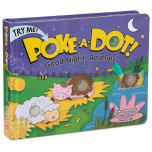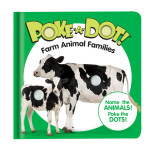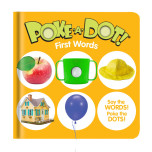We use cookies to make your experience better. To comply with the new e-Privacy directive, we need to ask for your consent to set the cookies. Learn more.
These books are so much fun! Read with your little ones through these poetic books and let them Poke the Dots as they count the animals in each book. Children will be engaged right from the front cover, as they get to push in the plastic dots on the animals on the front of the book, and on every page in the book. The plastic dots are made of sturdy plastic that pushes in quietly from the front side, and makes a loud popping sound (similar to an intense bubble-wrap popping sound) from the back side, and pages are double-thickness cardboard. These books were made to stand up to lots and lots of reading, counting, and poking. Poking the dots encourages children to count and helps them keep track of the animals they have already counted. These books were tested and approved here at Rainbow by one of our harshest critics (4 year old Cheyenh), and yes the adults played with them too. Once you start poking, it's hard to stop. ~ Donna






















